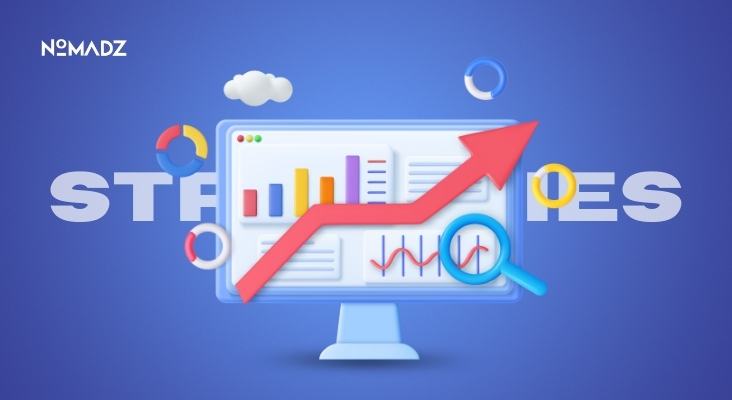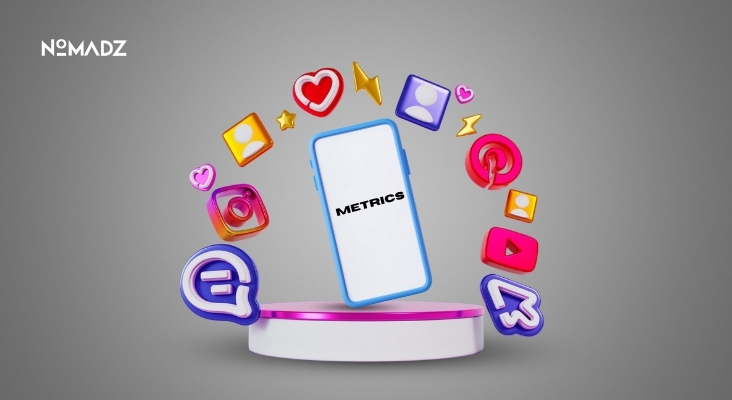Tips to Find Your Target Audience in 2025
Are the marketing activities you are using not giving you the results you want? You may not be reaching the right customer group. Identifying your target audience should be your primary concern so that you can market to them in a manner that will motivate them to buy your product.
This blog will provide actionable steps for identifying your target customers, fine-tuning targeting efforts, and staying competitive.
How to Identify Your Target Audience in 2025?
Due to all the changes in customer preferences and technology use, reaching your audience has become necessary in 2025. To be unique, brands should focus on their customers’ thoughts and use data.
What is the Target Audience?
A particular group of people in your market is most likely to care about what you have to offer. These people have similar characteristics such as age, hobbies, and habits. If you understand your customers, you can create messages that attract them and increase sales.
- Target Markets: The large group of potential customers for your offerings.
- Target Audiences: A specific market segment you aim to reach with targeted marketing messages.
If your business is fitness apparel, your market is made up of all health-conscious people, and your target audience is women between 25 and 35 who do yoga. Because of this distinction, you can create and personalize content that works well.
Also Read: Click Through Rate Tips & Formulas 2025
Divide Your Ideal Customer Group
The best marketing strategy is dividing the market into small, manageable target audience groups. If your market segments are well defined, it will be easier to tailor your communication to the needs of that group of customers.
Some of the ways you may consider to segment your market are:
- Demographic: Age, sex, income, education.
- Geographic: Location and climate, urban vs rural.
- Behavioral: Purchasing habits, brand loyalty, product usage.
Example: An entrepreneur selling green cleaning materials may target environmentally conscious homeowners aged 30 to 50 in urban settings. Located in this way, campaigns should be more relevant and effective in converting users.
Make Use of Data Analytics Tools
Using real-time data makes it easier to avoid guessing and improves the accuracy of marketing. Analyzing data about your target audience segment and improving strategic decisions using modern analytics tools:
- Google Analytics: Track website visitor behavior and demographics.
- Social Media Insights: Platforms such as Facebook and Instagram provide data about engagement and target demographics.
- Customer Relationship Management (CRM) Systems: Use purchase history to collect customer preferences that can define future campaigns.
Example: Google Analytics tells an online bookstore that most of the traffic comes from college students, driving the marketing team to emphasize selling textbooks to this audience, which leads to increased conversions.
Conduct Surveys and Collect Feedback from People
Your current customers’ opinions provide useful information.
- Surveys: Ask questions about preferences, needs, and satisfaction.
- Interviews: One-on-one discussions for a deeper understanding.
- Feedback Forms: Can be placed on your website or after purchase.
A food delivery service discovered through surveys that there is increasing demand for vegan meals, which resulted in the launch of a new vegan meal plan.
Also Read: Top Data Analysis Tools to Use in 2025
Follow the Strategies of Your Competitors
Looking at your competitors can help you find openings and chances in the market.
- Social Media Monitoring: Observe the type of content competitors post and the engagement they receive.
- Customer Reviews: Review competitor product reviews to identify common praises or complaints.
- Advertising Analysis: Examine where and how competitors are advertising.
A skincare brand realizes that other brands do not focus on men’s needs, creating a line just for men.
Make Detailed Descriptions of Your Target Buyers
Creating buyer personas allows you to understand your customers and target them better.
- Name and Demographics: Assign a name, age, occupation, and location.
- Goals and Challenges: Identify what they aim to achieve and the obstacles they face.
- Shopping Preferences: Understand their buying behavior and preferred channels.
Try Out and Improve Your Strategies
Implement A/B testing to determine what resonates best with your target marketing audience:
- Email Campaigns: Test different subject lines or content formats.
- Landing Pages: Experiment with various designs and call-to-actions.
- Advertisements: Try different messaging and visuals.
An e-commerce store compares two versions of a product page, one with the price highlighted and the other emphasizing quality. It discovered that the page focuses on quality, which results in more sales.
Pay Attention to Recent Changes in the Market
Since people’s tastes change, it is important to follow these changes.
- Read reports that are published regularly for your business sector.
- Social Listening requires watching the popular conversations on social media to see what trends are arising.
- Always analyse the feedback you get from customers through customer reviews.
Many people want environmentally friendly clothing, so a retailer adds those items to their stock.
Also Read: How Does a PPC Campaign Work
Conclusion
To know and connect with customers, you must update your strategy and regularly make changes. If you group your customers, use available information, question them directly, and keep up with trends, you can design good targeted marketing strategies for them.
This method enables businesses to provide their customers’ wants while increasing their revenue.
FAQs
Q. What is a target market?
A company’s products or services are designed to appeal to a specific demographic, which is the target market.
Q. What can be understood as a target customer?
A target customer refers to a person who generally buys or follows a product or service, which shows that the person is interested in the product/service.
Q. What sets the target audience apart from the target consumer?
In marketing, the broader group is referred to as the targeted market, and the actual user of the product is called the target consumer.
Q. What is an example of your target audience?
A fitness brand could target urban men and women between 25 and 35 who exercise often and buy health items online.
Q. What are the four types of market segmentation?
Demographic, Psychographic, Geographic, and Behavioral.









Leave feedback about this